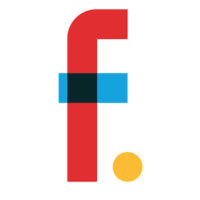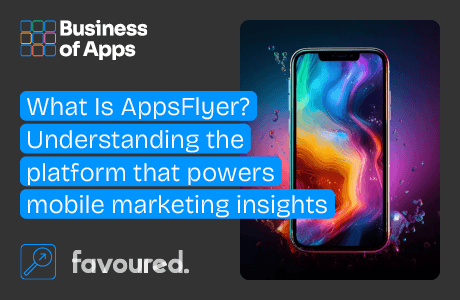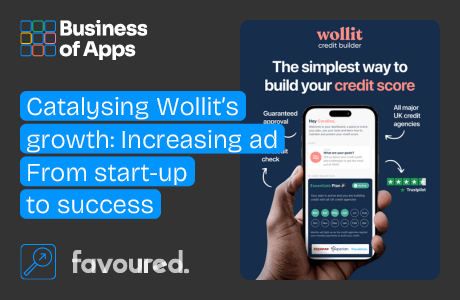The rise of AI-generated user-generated content (AI UGC) is redefining how brands approach creative testing in mobile marketing. Traditionally, producing and optimizing creative assets for user acquisition campaigns required extensive resources—designers, video editors, and content creators—grinding away to develop, test, and iterate on ad variations. However, AI-powered solutions like HeyGen are transforming this landscape, allowing marketers to scale creative production with unprecedented speed and efficiency.
To explore this shift, we spoke with Andy Willers, co-founder at Favoured, an app-focused performance marketing agency. Andy shared how Favoured is leveraging AI UGC to overcome creative bottlenecks, enhance testing capabilities, and unlock new opportunities in mobile marketing.
The challenges of traditional creative testing and how AI changes the game
Before integrating AI-generated UGC, creative testing was a resource-intensive process for agencies like Favoured. The traditional workflow involved multiple teams—designers, editors, and UGC content creators—constantly producing and refining assets. The biggest challenge? Volume and speed.
“We were always struggling to produce enough creative to adequately test and optimize campaigns,” Andy explained. “Testing different hooks, script variations, and executions took time. It meant briefing content creators, recording UGC scripts, and refining ad variations—all while staying on top of data from our media buyers.”
This bottleneck in creative production limited how quickly brands could iterate and refine their messaging. However, AI UGC platforms like HeyGen have supercharged the process.
“What AI has allowed us to do, particularly on the UGC side, is massively increase our capability for creative testing,” Andy said. “HeyGen’s digital avatars enable us to quickly generate multiple UGC scripts or executions—allowing us to test different messaging and ad styles at scale.”
AI-generated avatars can be customized to deliver specific messages in a controlled and repeatable way, cutting out the time-consuming process of hiring and briefing real content creators. But, Andy emphasized that AI hasn’t completely replaced human input.
“We’re not at a stage where you type in a prompt and AI spits out a perfect execution. The human touch is still essential,” he explained. “HeyGen gives us the raw material—high-quality AI avatars—but it still requires skilled video editors to integrate them effectively with B-roll footage and visual elements.”
By combining AI-generated assets with human editing, Favoured has found the sweet spot between automation and creativity.
How AI UGC impacts performance, cost, and efficiency
The impact of AI UGC isn’t just theoretical—Favoured has already seen tangible benefits in live campaigns. One of their biggest wins? Expanding creative testing into new geographical markets.
“For one of our clients launching in a new country, we needed to test how well previous campaign strategies would work, while also adapting to the cultural and linguistic nuances of the target market,” Andy shared.
Traditionally, launching ads in multiple languages required hiring native-speaking content creators—a time-consuming and costly process. But with AI-powered voice and video generation, Favoured was able to translate scripts, generate natural-sounding voiceovers, and produce localized UGC ads almost instantly.
“We used AI tools to translate scripts and generate voiceovers that sounded completely natural. Then, we delivered the same creative in multiple languages, reducing costs while improving efficiency,” Andy explained.
The results? Lower costs and faster creative iteration.
“This approach allowed us to rapidly test and optimize creatives without the overhead of sourcing content creators in every market. We were able to reduce our cost per install (CPI) through rapid creative testing and quickly identify the most effective messaging,” Andy said.
Beyond localization, AI UGC also enables agencies to test more variations faster. Rather than spending weeks producing content, Favoured can now generate multiple ad variations within hours, analyze performance data, and iterate based on real results.
Ultimate App Growth Guide 2025
Boost your app’s success with the Ultimate App Growth Guide! 🚀 Expert insights, proven strategies & must-know tips. Download now!
Master app growth“What I really like about it is that it allows us to test 10 different scripts, get data on what works, and then use that as a basis for real content creators,” Andy said. “So instead of guessing what will resonate, we use AI to find the winning formula first, then scale it with influencer partnerships.”
This data-driven creative process ensures that budgets are spent on ads with proven effectiveness, rather than relying on guesswork.
Opportunities and risks as AI UGC becomes more advanced
AI-driven creative testing is evolving at a breakneck pace, offering brands exciting new opportunities—but also introducing potential risks.
One of the biggest opportunities is first-mover advantage.
“If you stay on top of AI advancements and integrate them into your creative strategy early, you can gain a real competitive edge,” Andy noted. “The pace of AI development is staggering—if you’re not paying attention, you risk falling behind.”
For brands willing to experiment, AI-generated content can unlock faster testing, better personalization, and cost-effective scaling.
However, as AI-generated video becomes more sophisticated, there’s also a risk of consumer fatigue and skepticism.
“I don’t think most people watching our ads right now even realize they’re AI-generated,” Andy admitted. “With good editing, they look completely natural. But as AI content becomes more widespread, audiences might start questioning authenticity.”
This shift could lead to greater scrutiny of AI-generated ads, requiring brands to be more transparent about their use of AI.
“We might reach a point where people start asking: ‘Am I watching a real person, or is this AI?’” Andy said. “And if audiences become skeptical, brands will need to find ways to maintain trust.”
Another potential risk is AI creative fatigue—where consumers grow tired of ads that feel too polished or artificial.
“Right now, AI-generated creative is performing well. But over time, if everything starts looking too uniform, we might see diminishing returns,” Andy explained. “That’s why we still use human content creators in tandem with AI—it keeps our creative fresh and diverse.”
Ultimately, AI UGC isn’t about replacing human creativity—it’s about enhancing it.
“I see AI as another tool in the creative toolkit,” Andy said. “It’s not about removing humans from the process, but about using AI to augment what we do—making creative testing faster, more scalable, and more data-driven.”
Final thoughts: AI UGC Is a game-changer, but balance is key
The integration of AI UGC into mobile creative testing is reshaping the industry. By automating time-consuming processes, brands can test, iterate, and optimize at unprecedented speed—leading to lower costs and better campaign performance.
But as Andy highlighted, the human touch remains essential. AI is a powerful tool, but creativity, strategy, and understanding consumer perception will always require human insight.
For brands looking to stay ahead, the key is to embrace AI without losing authenticity. As AI-generated content becomes the norm, companies that find the right balance between automation and originality will lead the next wave of innovation in mobile marketing.
So, is AI UGC the future of creative testing? The answer is clear: It’s already here.













